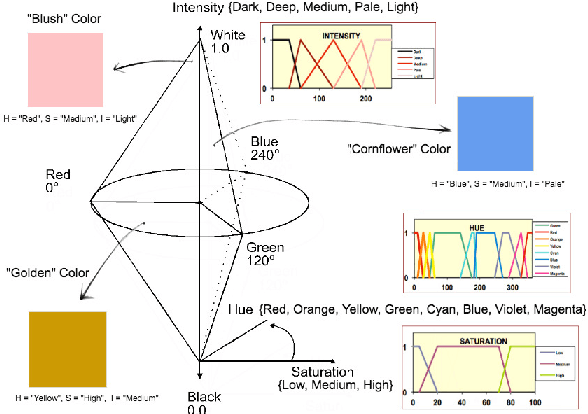Hiroharu Kawanaka
Towards a Universal Understanding of Color Harmony: Fuzzy Approach
Oct 01, 2023



Abstract:Harmony level prediction is receiving increasing attention nowadays. Color plays a crucial role in affecting human aesthetic responses. In this paper, we explore color harmony using a fuzzy-based color model and address the question of its universality. For our experiments, we utilize a dataset containing attractive images from five different domains: fashion, art, nature, interior design, and brand logos. We aim to identify harmony patterns and dominant color palettes within these images using a fuzzy approach. It is well-suited for this task because it can handle the inherent subjectivity and contextual variability associated with aesthetics and color harmony evaluation. Our experimental results suggest that color harmony is largely universal. Additionally, our findings reveal that color harmony is not solely influenced by hue relationships on the color wheel but also by the saturation and intensity of colors. In palettes with high harmony levels, we observed a prevalent adherence to color wheel principles while maintaining moderate levels of saturation and intensity. These findings contribute to ongoing research on color harmony and its underlying principles, offering valuable insights for designers, artists, and researchers in the field of aesthetics.
Color Aesthetics: Fuzzy based User-driven Method for Harmony and Preference Prediction
Aug 29, 2023Abstract:Color is the most important intrinsic sensory feature that has a powerful impact on product sales. Color is even responsible for raising the aesthetic senses in our brains. Account for individual differences is crucial in color aesthetics. It requires user-driven mechanisms for various e-commerce applications. We propose a method for quantitative evaluation of all types of perceptual responses to color(s): distinct color preference, color harmony, and color combination preference. Preference for color schemes can be predicted by combining preferences for the basic colors and ratings of color harmony. Harmonious pallets are extracted from big data set using comparison algorithms based on fuzzy similarity and grouping. The proposed model results in useful predictions of harmony and preference of multicolored images. For example, in the context of apparel coordination, it allows predicting a preference for a look based on clothing colors. Our approach differs from standard aesthetic models, since in accounts for a personal variation. In addition, it can process not only lower-order color pairs, but also groups of several colors.
 Add to Chrome
Add to Chrome Add to Firefox
Add to Firefox Add to Edge
Add to Edge